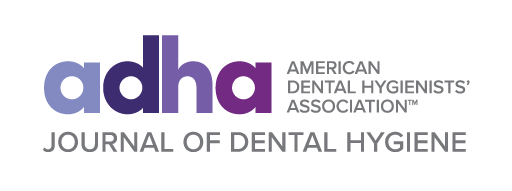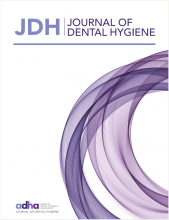Abstract
Purpose: The purpose of this study was to determine strength of muscles involved with instrumentation (scaling) by dental hygienists and the additive effects of cellular (mobile) phone usage, as indicated by measurements of muscular force generation.
Methods: A convenience sample of licensed dental hygienists currently in clinical practice (n=16) and an equal number of individuals not currently using devices/tools repetitively for work (n=16), agreed to participate in this pilot study. All participants completed a modified cell phone usage questionnaire to determine their use pattern and frequency. Upon completion of the questionnaire, participants' force production in six muscle groups was measured using a hand-held dynamometer. Descriptive statistics were used to analyze the data.
Results: A total of 16 licensed dental hygienists (n=16) and 16 participants with no history of using tools/devices repetitively for work (n=16), comprised the experimental and control groups, repectively. The control group generated greater muscle force than the experimental group for the abductor pollicis longus (p=0.045). Significant differences were identified when comparing the low mobile phone users in the experimental group to the control group for the flexor pollicis brevis (p=0.031), abductor pollicis longus (p=0.031), and flexor digitorum (p=0.006), with the control group demonstrating higher muscle force. Years in clinical practice and mobile phone use was shown to have a significant effect on muscular force generation for the flexor pollicis brevis (F=3.645, df=3, p=0.020) and flexor digitorum (F=3.560, df=3, p=0.022); subjects who practiced dental hygiene the longest produced the least amount of muscle force.
Conclusion: Results from this pilot study indicate there are no significant additive effects of cell phone use and dental hygiene practice on finger muscles used for instrumentation. However, results indicate that dental hygiene practice demonstrated significant effects on muscular strength as compared to individuals who do not use tools/devices repetitively for work. The small sample size may have impacted results and the study should be repeated with a larger sample.
Footnotes
Jessica R. Suedbeck, RDH, MSDH is an assistant professor in the School of Dental Hygiene, Old Dominion University, Norfolk, VA; Cortney N. Armitano-Lago, PhD, LAT, ATC is a postdoctoral research associate in the Department of Exercise and Sport Science, the University of North Carolina, Chapel Hill, NC; Emily A. Ludwig, RDH, MSDH is a visiting lecturer in the School of Dental Hygiene, Old Dominion University, Norfolk, VA.
This manuscript supports the NDHRA priority area, Professional development: Occupational health (determination and assessment of risks).
- Received April 19, 2019.
- Accepted September 29, 2019.
- Copyright © 2020 The American Dental Hygienists’ Association








